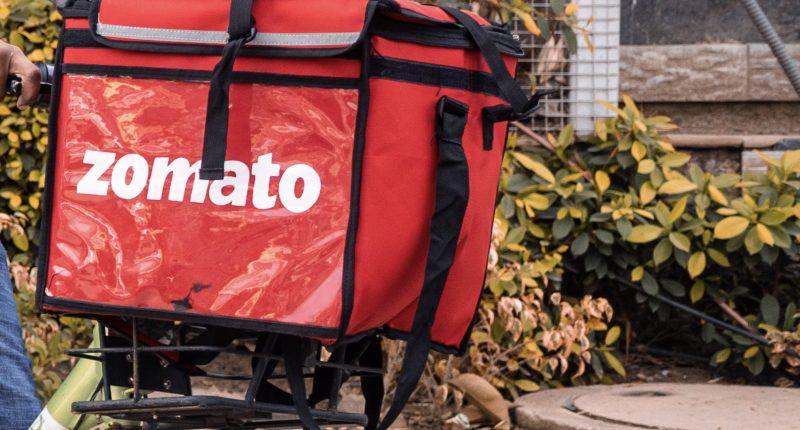Zomato’s shares rose slightly (to ₹54.60 per share) on Thursday as the foodtech giant clocked a 75% rise in revenue from operations for Q3 FY23. As compared to the corresponding period last year, the food delivery aggregator pocketed ₹1,948 crore for the quarter that ended December 31, 2022. On a sequential basis, IRS revenue rose by 17% from ₹1,661 crore in Q2FY23, while adjusted revenue (on a year-on-year basis) clocked a growth of 66% growth to ₹2,363 crore.
However, these increases in revenue coincide with the widening of Zomato’s consolidated net loss for the same period. For Q3 FY23, Zomato’s consolidated loss widened to ₹346.6 crore on-year, an increase from the loss of ₹63 crore it recorded in the year-ago period. In the previous (September) quarter, the unicorn clocked a net loss of ₹250.8 crore.
Zomato clocked an adjusted EBITDA loss (ex-quick commerce) of ₹0.38 billion for the winter quarter, a drop from the ₹2.72 billion it clocked in the corresponding quarter in the previous year. Its adjusted EBITDA margin (ex-quick commerce) for the same period improved to -2%, as compared to -19% a year ago. To add to this, Zomato (before the acquisition of Blinkit) turned adjusted EBITDA positive for January 2023.
Revenue from Zomato’s food delivery business clocked an annual growth of 30.4% to ₹1,565 crore in the third quarter, while it’s B2B hyperpure segment witnessed a 3-fold growth in revenue, which amounted to ₹421 crores (as against ₹334 crores in Q2 FY23). For the food delivery business, Zomato’s gross order value (GOV) rose by 22% YoY (which marks a quarterly growth of 1%), on the backs of growth in both order volumes and average order value. However, it declined sequentially by a little over 1%. Revenue from its quick commerce vertical rose to ₹3.01 crores as well.
The unicorn added 23 million new customers last year, a little less than the 23.6 million it had added in 2021. Going forward, it remains confident of meeting its guidance to breakeven at the EBITDA level, excluding quick commerce business, by the September quarter of FY24.
“We have seen an industry-wide slowdown in the food delivery business since late October (post the festival of Diwali). This trend has been seen across the country but more so in the top 8 cities. As a result, GOV growth in food delivery in Q3FY23 was only 0.7% QoQ in an otherwise seasonally strong quarter. Orders declined QoQ while AOV grew. On a YoY basis, GOV grew 21% driven by order volume growth of 14% along with 6% growth in AOV. Adjusted Revenue declined by 1.0% QoQ largely driven by a decline in order volumes. On a YoY basis, Adjusted Revenue grew 30%,” said Akshant Goyal, Zomato CFO. He added that it “remains a challenging demand environment,” but believed that they had finally weathered the worst of the storm and the long-term opportunity for the food delivery business “remains large and exciting.”





